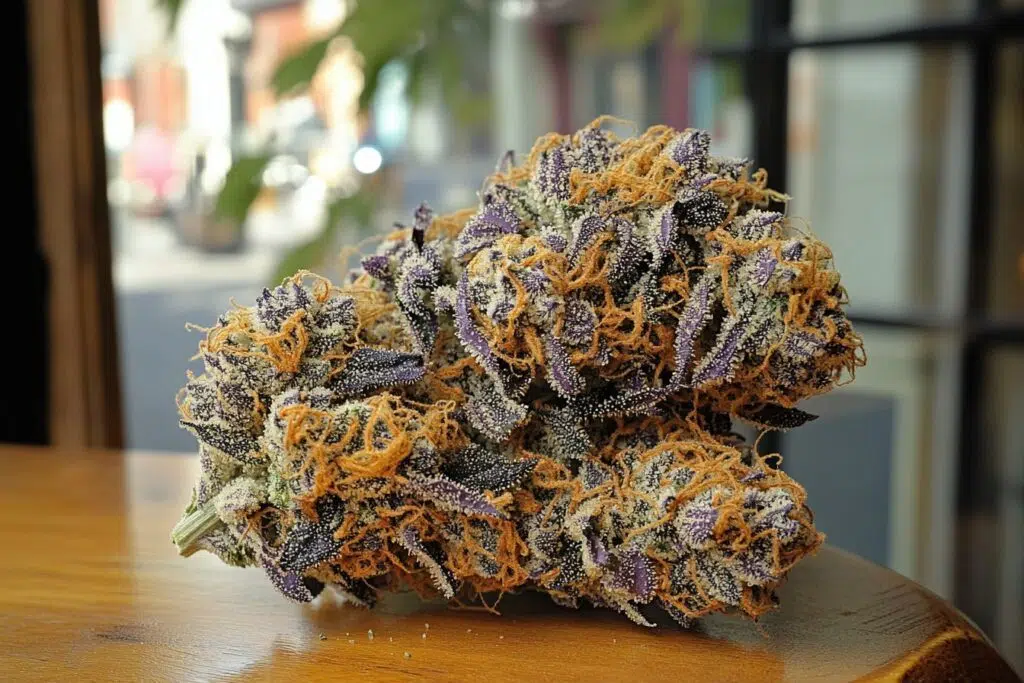Terpenes are organic compounds found in many plants, including cannabis. They contribute greatly to the diversity of smells and flavors present in different varieties of this plant. In addition to their aromatic characteristics, terpenes play an important role in the therapeutic and recreational effects of cannabis. This article explores in detail what terpenes, how they work and why they are so important.
Sommaire
ToggleWhat is a terpene?
Terpenes are aromatic molecules produced by many plants as well as certain insects. They are best known for their presence in the cannabis but also in herbs like mint, thyme, and even in certain citrus fruits. These volatile compounds have various functions in nature, including deterring herbivores or attracting pollinators.
Each terpene has a unique chemical structure that gives it its distinctive aroma and specific properties. For example, the limonene gives lemons and oranges their characteristic smell while linalool is responsible for the soothing scent of lavender.
The main categories of terpenes
Myrcene
THE myrcene is one of the terpenes most abundant in the cannabis. It has a musky, earthy smell with hints of cloves. THE myrcene is known for its sedative and relaxing properties. This terpene can amplify the psychoactive effects of THC, contributing to a feeling of deep relaxation in the user.
It is also found in plants like hops and lemongrass. In addition to its calming effects, it also has anti-inflammatory and analgesic properties. If you like varieties of cannabis which “glue” you to the sofa, the myrcene probably plays a key role.
Limonene
Known for its fresh lemony aroma, limonene is found in citrus fruits like oranges and lemons. In the cannabis, This terpene not only brings its pleasant scent but also several beneficial effects. It is said to have antifungal and antibacterial properties, in addition to improving mood and reducing stress.
Consumers looking for energizing and uplifting effects can turn to strains rich in limonene. That said, research on terpenes continue and future discoveries could reveal even more benefits associated with this fascinating molecule.
- Myrcene: Earthy, musky, sedative effects.
- Limonene: Lemon, improves mood, antifungal properties.
- Linalool: Floral, calming effect, contained in lavender.
The interaction between terpenes and cannabinoids
The synergy between terpenes and cannabinoids
It is essential to understand that terpenes do not work alone. They interact with cannabinoids, such as THC and CBD, to modulate the effects of cannabis. This interaction is often called the “entourage effect”, meaning that the compounds present in the plant cannabis act synergistically to produce a more comprehensive set of effects.
For example, a strain high in THC might cause anxiety in some people. However, if this same variety also contains high levels of linalool, known for its soothing properties, the anxiety-inducing effect could be reduced. In this way, the specific combination of terpenes and cannabinoids strongly influence the final consumer experience.
Terpenes and their therapeutic properties
Different terpenes have therapeutic properties unique. Take the case of linalool. This terpene Also found in lavender is known for its calming effects. Studies show it could help reduce stress and anxiety. Its sweet floral scent makes it particularly pleasant to inhale.
On the other hand, beta-caryophyllene, found in black pepper and cloves, interacts directly with the endocannabinoid system. It acts specifically on CB2 receptors, providing anti-inflammatory and analgesic properties without the psychoactive effects associated with THC. Using products rich in beta-caryophyllene could therefore be beneficial for those suffering from chronic pain.
Terpenes in the Cannabis Industry
Use in consumer products
Nowadays, manufacturers of products cannabis pay particular attention to the profiles of terpenes of their products. Whether in flowers, concentrates or edibles, adding terpenes can improve not only the aroma and taste but also the overall effects.
Vaping enthusiasts can choose cartridges infused with terpenes specific for a personalized experience. Those who prefer tinctures or oils will also find formulations enriched with terpenes to meet various needs, whether it is relaxation, concentration or pain relief.
The Research and Future of Terpenes
While interest in cannabis continues to grow, research on terpenes is gaining momentum. Clinical trials and preliminary studies suggest that these molecules could have important medical applications. For example, some research indicates that pinene, another terpene present in pine needles, could improve memory and help fight respiratory infections.
Companies are investing in technologies to isolate and recombine different terpenes in order to create targeted formulations. This shows that we are only scratching the surface of what terpenes can offer, both recreationally and medically.
How do terpenes influence the cannabis consumer experience?
Aromas and flavors
One of the first things you notice when handling cannabis, that’s its aroma. THE terpenes are responsible for this incredible olfactory variance between the different strains. Whether it is a fruity, woody, floral or spicy note, each profile of terpene adds a unique touch to the sensory experience.
These aromas aren’t just pleasant; they can also influence your choice of product. Consumers often develop preferences for certain aromatic notes that match their personal tastes or even the state of mind they are trying to achieve, whether to relax or to stimulate themselves.
Differentiated effects
Beyond the aroma, the terpenes play a crucial role in modulating the effects of cannabis. As mentioned previously, terpenes like the myrcene and the linalool can provide intense relaxation, while others like limonene offer an energizing boost. The terpene composition of a variety of cannabis can completely transform the user experience.
This explains why two strains with similar THC levels can produce very different effects. Seasoned consumers therefore often attach as much importance to the profiles of terpenes than THC or CBD percentages.



